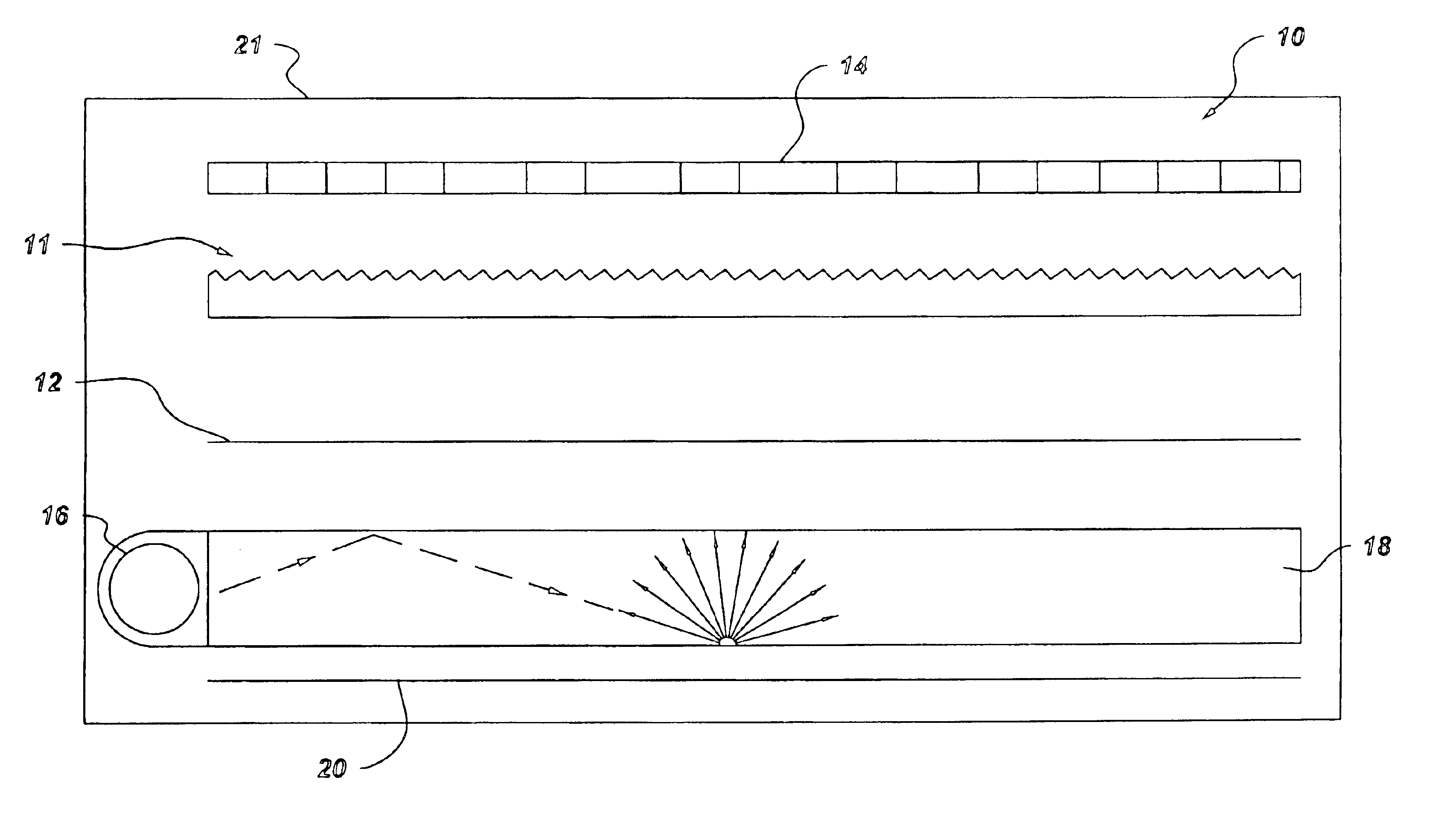Microstructure-bearing articles of high refractive index
a microstructure and refractive index technology, applied in the field of replication of microstructurebearing surfaces, can solve the problems of unfavorable physical properties of polymers, inability to achieve a high refractive index, and inability to use only resinous materials of reasonable cost, etc., and achieve the effect of high refractive index
- Summary
- Abstract
- Description
- Claims
- Application Information
AI Technical Summary
Benefits of technology
Problems solved by technology
Method used
Image
Examples
example 1
To a 3-necked flask equipped with an addition funnel, temperature probe and mechanical stirrer was charged 31.2 ml of 2,2,4-trimethylhexane 1,6-diisocyanate and 50 mg of dibutyltin dilaurate. The addition funnel was charged with 39.75 g of warm polycaprolactone diol (Mn. 530), which was added to the contents of the flask at 55-60° C. The mixture was then stirred at 65° C. for 14 hours. The flask was then cooled to 55° C. and a mixture of 18.7 ml of 2-hydroxyethyl methacrylate and 100 mg hydroquinone monomethyl ether was added while maintaining the temperature in the range of 54-58° C. The mixture was stirred at 55° C. for 10-12 hours until completion of the reaction was verified by infrared spectroscopy. The product was the desired oligomeric urethane dimethacrylate, hereinafter sometimes designated “oligomer dimethacrylate”.
example 2
Titanium tetraisopropoxide, 105 g, was added with stirring to a mixture of 1,000 g of 2-propanol, 49.05 g of concentrated hydrochloric acid and 5.25 g. of distilled water. The resulting mixture was stirred at room temperature for 72 hours, after which 0.23 g of a 33% solution of 4-OH TEMPO in 1-methoxy-2-propanol and 13.75 g of 3-methacryloxypropyltrimethoxysilane was added. The solution was heated for 6.5 hours at 50° C., after which 447 g of the solution was transferred to a round-bottomed flask and stripped of a large portion of the volatiles using a rotary evaporator. Propylene glycol methyl ether acetate, 140 g, was added and stripping was continued at 55° C. and full vacuum. Stripping was stopped when the solution weight was 171 g, and 137 g of additional propylene glycol methyl ether acetate was added to the flask. Stripping was continued until the solution weight was 236 g. The solids content of the resulting titanium-containing nanoparticle dispersion was determined gravime...
example 3
A mixture of 49.5 parts of an oligomeric polyester urethane diacrylate commercially available under the trade designation “CN-985B88” from Sartomer Co. and an amount of the product of Example 2 to provide 50 parts of titanium was vacuum stripped and 0.5 part of “Darocur 4265” (in the form of a 10% solution in 1-methoxy-2-propanol) was added. The resulting composition was spin coated from 1-methoxy-2-propanol on a bisphenol A polycarbonate plaque and cured by exposure to ultraviolet radiation emitted by a single “H” bulb. The resulting coating had a haze value of 0.43%, an abrasion rating of 25.7 and an adhesion rating of 0B. It is expected that adhesion could be improved by addition of minor proportions of a multifunctional (meth)acrylate monomer, as determined by simple experimentation.
PUM
| Property | Measurement | Unit |
|---|---|---|
| Length | aaaaa | aaaaa |
| Fraction | aaaaa | aaaaa |
| Percent by mass | aaaaa | aaaaa |
Abstract
Description
Claims
Application Information
 Login to View More
Login to View More - R&D
- Intellectual Property
- Life Sciences
- Materials
- Tech Scout
- Unparalleled Data Quality
- Higher Quality Content
- 60% Fewer Hallucinations
Browse by: Latest US Patents, China's latest patents, Technical Efficacy Thesaurus, Application Domain, Technology Topic, Popular Technical Reports.
© 2025 PatSnap. All rights reserved.Legal|Privacy policy|Modern Slavery Act Transparency Statement|Sitemap|About US| Contact US: help@patsnap.com


